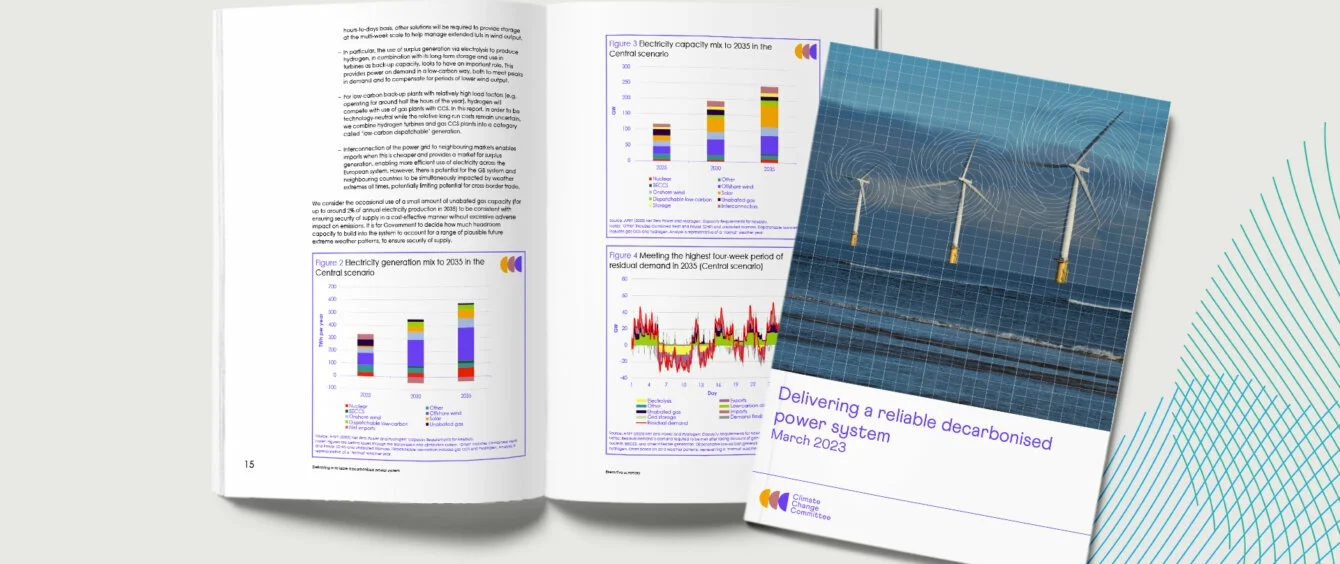The UK’s Climate Change Committee (CCC) has assessed the UK’s progress towards a fully decarbonised power system by 2035. The news is both good and bad – it is possible, but the scale of the task is under-estimated and the current rate of delivery is too slow.
Low carbon power is the foundation of the energy transition
The report, Delivering a Reliable Decarbonised Power System, makes clear that a decarbonised electricity sector is the foundation on which other key elements of a net zero carbon economy will be built. Moreover, a reliable electricity system will become ever more fundamental to a successful economy as commerce and society become more dependent on IT and the use of energy by wire.
Electricity consumption is expected to rise. The CCC sees electricity demand increasing by 50% by 2035 and doubling by 2050. The primary components of this demand growth in order of size are buildings, land transport and industry.
However, current rates of infrastructure delivery are too low. The committee argues that barriers to the swift deployment of critical infrastructure must be removed and gaps in government policy addressed. In particular, infrastructure build rates, both for generation and network capacity, need to exceed current and historical levels.
Offshore wind will be the UK’s largest source of power
The CCC says that a reliable, clean power system would source 70% of its annual generation from variable renewables, primarily offshore wind. 20% would come from technologies with firmer generation profiles – nuclear and bioenergy with carbon capture and storage.
The remaining 10% would come from low-carbon back-up generation such as hydrogen-fired turbines and fossil gas plants with carbon capture and storage (CCS), alongside other forms of system flexibility. The CCC says there should be no role for large-scale unabated biomass generation beyond the expiry of existing subsidy support in 2027.
In the CCC’s view, sources of system flexibility will be crucial for addressing potential variation in renewable energy generation, which may become more extreme with climate change. These sources include demand-side management (for example from smart electric vehicle charging), interconnectors, storage and low-carbon back-up plants.
Hydrogen to play essential role in system security
As batteries only meet variations in short-term demand, the CCC sees an “essential” role for hydrogen production, storage and then use for power generation in competition and combination with fossil gas + CCS to provide ‘low-carbon dispatchable generation.’
Emphasising the need to fast-track hydrogen infrastructure investment, the report says “the volumes of hydrogen produced and used in the power system alone by 2035 have potential to be substantial.”
However, it prioritises electrification where possible, saying “using hydrogen in place of efficient electrification (heat pumps for example) would be a much less efficient use of domestic energy resources, leading to greater need for imported energy to supplement them.”
Fossil gas likely to remain in the energy mix
The CCC says that a small amount of unabated gas-fired capacity may be needed in 2035 to cope with potential weather extremes. It suggests gas may meet about 2% of annual generation to ensure “security of supply in a cost-efficient manner without excessive adverse impact on emissions.”
It says the GB electricity system will still need significant volumes of fossil gas with CCS either for power generation or blue hydrogen production, given the constraints on the construction of zero carbon capacity. The use of fossil gas + CCS is then expected to fall towards 2050 as it is replaced by green hydrogen production.
But to achieve power sector decarbonisation by 2035, the CCC says, annual offshore wind construction rates need to be 40% higher than in 2022. A much faster rate of new transmission infrastructure construction is also required. In addition, somewhere between £300-£430 billion of new investment is needed in technologies not yet commercially deployed in the UK, including CCS, low carbon hydrogen production and storage, and hydrogen-fired electricity generation.
